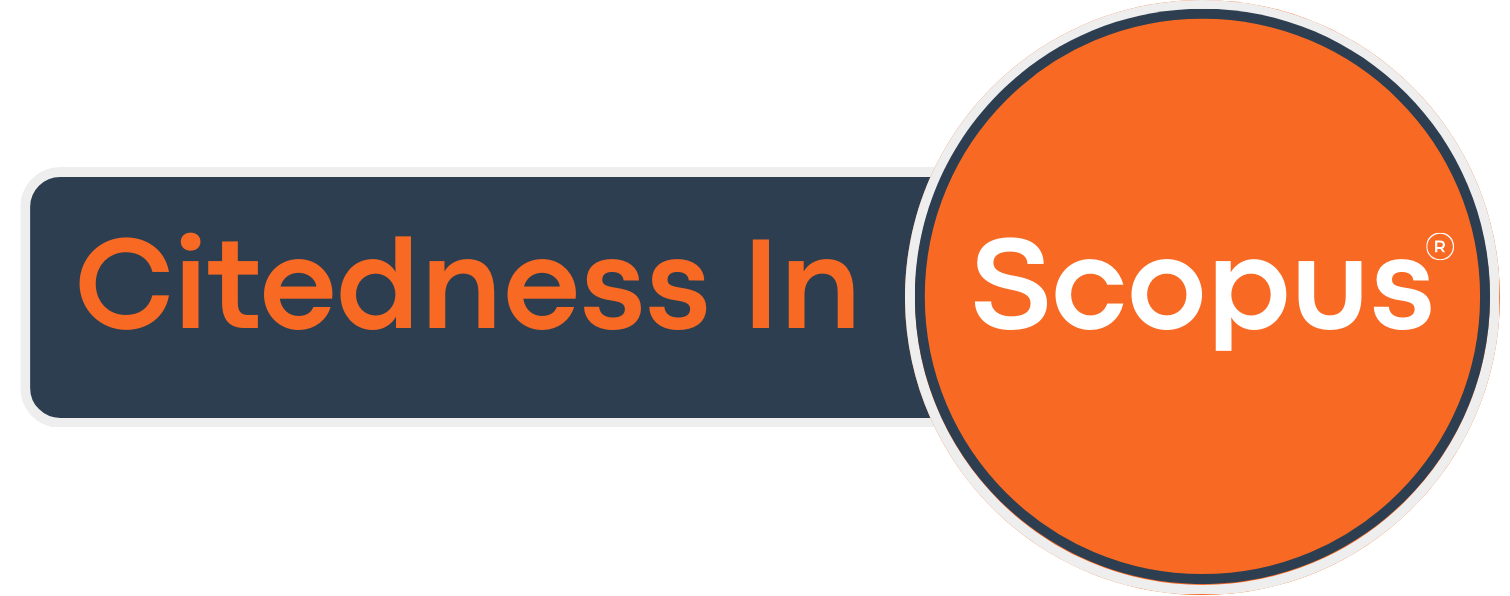A Briquette Characteristics of Cocoa Shell Charcoal and Rice Husk Charcoal Mixtures on Briquette Quality
Karakteristik Briket Campuran Arang Kulit Kakao dan Arang Sekam Padi Terhadap Mutu Briket
DOI:
https://doi.org/10.21070/r.e.m.v9i2.1729Keywords:
briquettes; cocoa shells; rice huskAbstract
Biomass energy is produced by converting solid raw materials into a more useful compressed form known as briquettes. This study aims to examine the effect of varying compositions of charcoal briquettes using a mixture of cocoa shells and rice husks on the briquette characteristics. The experimental method employs a Completely Randomized Design with four treatments: P1 = 100% cocoa shells, P2 = 75% cocoa shells + 25% rice husks, P3 = 25% cocoa shells + 75% rice husks, and P4 = 100% rice husks. The study finds that the lowest moisture content is in P3 (8.01%), the lowest ash content is in P3 and P4 (4.1% and 3.8%, respectively), the highest calorific value is in P1 (3,658 cal/g), the longest ignition time is in P3 (50 minutes), and the best hardness is in P2 (785.95 N). Based on the results, the best treatment is P3, which achieves a moisture content of 8.01%, ash content of 4.1%, and the longest burning time of 50 minutes.
References
M. Medynda, T. Sucipto, and L. Hakim, “Pengembangan Perekat Likuida dari Limbah Kulit Buah Kakao ( Theobroma cacao L .) ( Development of Wood Liquid Adhesive from waste of cocoa fruit skin ( Theobroma cacao . L )),” Peronema Forestry Science Journal, vol. 1, no. 1, pp. 1–10, 2012.
R. Shuma and D. M. Madyira, “Production of Loose Biomass Briquettes from Agricultural and Forestry Residues,” in Procedia Manufacturing, 2017. doi: 10.1016/j.promfg.2016.12.026.
A. A. Huda, A. Fathoni, and M. J. Aldi, “Karakteristik Briket Limbah Cangkang Kemiri dengan Perekat Beras Ketan Karakteristik Briket Limbah Cangkang Kemiri dengan Perekat Beras Ketan,” R.E.M. (Rekayasa Energi Manufaktur) Jurnal, vol. 8, no. 2, pp. 81–86, 2023, doi: http://doi.org/10.21070/rem.v 8 i2.1 6 7 5.
K. P. Direktorat Jenderal Perkebunan, “Statistik Perkebunan Indonesia,” Kementerian Pertanian, no. October 2013, pp. 1–224, 2019.
BKPM NTB, “Potensi Investasi Regiuonal Nusa Tenggara Barat,” Investasi BKPM NTB. Accessed: Oct. 15, 2024. [Online]. Available: https://regionalinvestment.bkpm.go.id/pir/daerah/?id=52
Z. Daud, H. Awang, A. S. Mohd Kassim, M. Z. Mohd Hatta, and A. Mohd Aripin, “Cocoa Pod Husk and Corn Stalk: Alternative Paper Fibres Study on Chemical Characterization and Morphological Structures,” in Advanced Materials Research, 2014. doi: 10.4028/www.scientific.net/AMR.911.331.
M. M. Wijaya, M. Wiharto, and M. Anwar, “Kandungan selulosa limbah kakao dan analisis kandungan kimia asap cair kulit kakao dengan metode gc-ms,” Jurnal Kimia dan Pendidikan Kimia, 2017.
M. N. Usman, “MUTU BRIKET ARANG KULIT BUAH KAKAO DENGAN MENGGUNAKAN KANJI SEBAGAI PEREKAT,” PERENNIAL, 2007, doi: 10.24259/perennial.v3i2.172.
M. T. Muzakir, “Pemanfaatan Kulit Buah Kakao Menjadi Briket Arang Menggunakan Kanji Sebagai Perekat,” Serambi Engineering, vol. II, no. 3, pp. 124–129, 2017.
Suprapti and S. Ramlah, “Pemanfaatan kulit buah kakao untuk briket arang,” Jurnal Biopropal Industri, vol. 4, no. 2, pp. 65–72, 2013.
M. Taufiq, T. Y. Ginting, and S. M. B. Sitepu, “PENGARUH PERBANDINGAN ARANG LIMBAH PELEPAH KELAPA SAWIT DAN KULIT KAKAO TERHADAP MUTU BRIKET ARANG DI DESA TIMBANG JAYA KECAMATAN BAHOROK, KABUPATEN LANGKAT, PROVINSI SUMATERA UTARA,” Journal of Animal Science and Agronomy Panca Budi, vol. 4, no. 2, pp. 235–244, 2019.
E. Mutiara, F. Hamzah, and Y. K. Dewi, “Characteristics of Cocoa Pod Shell Charcoal and Bamboo Stem Charcoal to The Quality of Briquettes,” Jurnal Agroindustri Halal, vol. 10, no. 1, pp. 13–22, 2024.
B. P. S. BPS, “Luas Panen, Produksi, dan Produktivitas Padi Menurut Provinsi, 2021-2023,” Badan Pusat Statistik (BPS - Statistics Indonesia)Jl. Dr. Sutomo 6-8 Jakarta 10710 Indonesia. Accessed: Oct. 15, 2024. [Online]. Available: https://www.bps.go.id/id/statistics-table/2/MTQ5OCMy/luas-panen--produksi--dan-produktivitas-padi-menurut-provinsi.html
A. A. Huda, K. Karyanik, M. Muliatiningsih, A. Fathoni, and A. Hakim, “Effect of adhesive concentration and particle size on the quality of hazelnut shell briquettes with glutinous rice adhesive,” Jurnal Agrotek Ummat, 2023, doi: 10.31764/jau.v10i4.19663.
A. A. Huda, K. Karyanik, F. A. Jinwantara, and ..., “Pelatihan Pembuatan Briket Arang Limbah Bonggol Jagung Untuk Meningkatkan Pendapatan Usaha Masyarakat Desa Mesanggok …,” JMM (Jurnal …, vol. 8, no. 3, pp. 2883–2892, 2024, [Online]. Available: https://journal.ummat.ac.id/index.php/jmm/article/view/23312%0Ahttps://journal.ummat.ac.id/index.php/jmm/article/download/23312/pdf
I. Y. Permatasari and B. Utami, “Pembuatan dan Karakteristik Briket Arang dari Limbah Tempurung Kemiri ( Aleurites Moluccana ) dengan Menggunakan Variasi Jenis Bahan Perekat dan Jumlah Bahan Perekat,” Prosiding Seminar Nasional Kimia, 2015.
H. A. Ajimotokan, A. O. Ehindero, K. S. Ajao, A. A. Adeleke, P. P. Ikubanni, and Y. L. Shuaib-Babata, “Combustion characteristics of fuel briquettes made from charcoal particles and sawdust agglomerates,” Sci Afr, 2019, doi: 10.1016/j.sciaf.2019.e00202.
B. Song, M. Cooke-Willis, B. Theobald, and P. Hall, “Producing a high heating value and weather resistant solid fuel via briquetting of blended wood residues and thermoplastics,” Full Length Article, vol. 283, no. 119263, pp. 1–10, 2021, doi: 10.1016/j.fuel.2020.119263.
J. Nagarajan and L. Prakash, “Preparation and characterization of biomass briquettes using sugarcane bagasse, corncob and rice husk,” in Materials Today: Proceedings, 2021. doi: 10.1016/j.matpr.2021.04.457.
M. Lubwama and V. A. Yiga, “Development of groundnut shells and bagasse briquettes as sustainable fuel sources for domestic cooking applications in Uganda,” Renew Energy, vol. 111, 2017, doi: 10.1016/j.renene.2017.04.041.
A. Niño, N. Arzola, and O. Araque, “Experimental study on the mechanical properties of biomass briquettes from a mixture of rice husk and pine sawdust,” Energies (Basel), 2020, doi: 10.3390/en13051060.
M. F. Nurkholis and L. H. Rizaldi, “Karakteristik briket ampas tebu ( bagasse ) dari bahan perekat tepung beras ketan Characteristics of bagasse briquettes using glutinous rice flour as adhesive,” Agrotek Ummat, vol. 10, no. 1, pp. 1–8, 2023.
F. Fachruzzaki, H. Halim, and R. Lestari, “Pengaruh Campuran Sekam Padi pada Briket Batubara,” Jurnal GEOSAPTA, 2022, doi: 10.20527/jg.v8i1.10740.
Published
Issue
Section
License
Copyright Notice
Authors retain copyright and grant the journal right of first publication with the work simultaneously licensed under a Creative Commons Attribution 4.0 International License that allows others to share the work with an acknowledgement of the work's authorship and initial publication in this journal.






